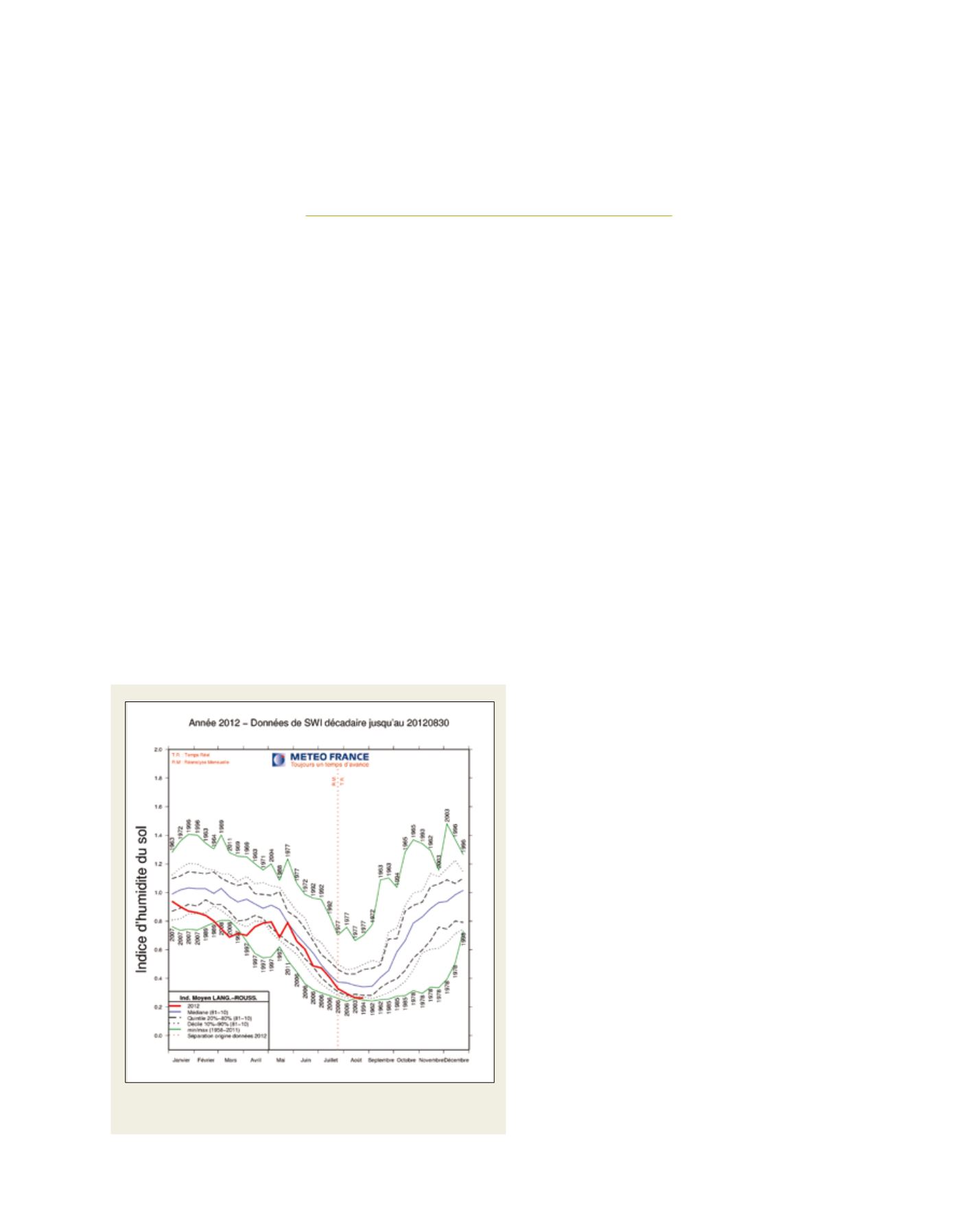

[
] 76
Partnerships on water resource
management in France
Philippe Dandin, François Besson, Michèle Blanchard, Jean-Pierre Céron, Laurent Franchistéguy, Fabienne
Rousset-Regimbeau, Jean-Michel Soubeyroux, Météo-France, Direction de la Climatologie;
Martine Baillon, Ministère de l’Ecologie, du Développement Durable et de l’Energie, SCHAPI;
Jean-Philippe Vidal, Institut National de Recherche en Sciences et Techniques pour l’Environnement et l’Agriculture;
Stéphanie Singla, Eric Martin, Météo-France and CNRS, Centre National de Recherches Météorologiques;
Florence Habets, CNRS, UMR Sisyphe UPMC, Mines ParisTech
I
n order to improve weather forecasts, meteorological models
have been gradually sophisticated and most operational
suites nowadays include a full representation of surface
conditions – oceans, continental surfaces and snow, ice or
glaciers – as well as of the coupling with the atmosphere.
Interactive Soil-Vegetation-Atmosphere Transfer (SVAT) models
are embedded in numerical weather forecast or climate models.
Such systems compute the interplay between the bottom part of the
atmosphere and the upper part of the soil: they describe in detail
the surface conditions of primary interest for water management.
They can be activated in various modes, covering a large spec-
trum of applications from a long-term reanalysis to
daily monitoring of surface conditions, short range to
seasonal forecasting or secular climate scenarios. A rich
set of products and services can therefore be delivered
by meteorological and climatological services to water
resource managers, adding to a routine approach the
other critical dimensions that enrich dialogue and create
the real value of the service – getting useful support
in the event of a crisis as well as receiving valuable
elements for short-term (daily and weekly), mid-term
(monthly and seasonally) or long-term (climate scenar-
ios) planning. The availability of a comprehensive set
of products covering all time and space scales relevant
to water monitoring is highly appreciated by different
users, which receive the tailored information immedi-
ately available in their own information systems.
An interactive SVAT hydrology suite called Safran-
Isba-Modcou (SIM) has been developed in the research
department at Météo-France, in close cooperation with
the hydrological research community. It was initially
meant for improving weather forecasts but it would
obviously serve other objectives. Safran performs an
analysis of eight essential atmospheric parameters.
Isba is a SVAT model and Modcou a distributed hydro-
logical model over all French catchments. Interestingly
the Isba-Modcou pair can be driven by various atmos-
pheric forcings from a reanalysis to short- or mid-term
numerical weather forecasts, to seasonal forecasts and
climate scenarios – provided a suitable downscaling
is applied to the large-scale fields.
SIM is first of all a community model (Météo-France,
Mines Paris Tech, Irstea) developed by scientists and
benefiting from regular upgrades by research labo-
ratories over the past 20 years.
1
Many studies have
been carried out with this suite, giving good confi-
dence in its behaviour under various circumstances.
Interestingly, SIM is used daily in the operational
suites of the meteorological service, Météo-France.
2
SIM is integrated every day, rerun at day+1 in order to
W
ater
A time sketch showing the evolution of the Soil Wetness Index for a French
region (red) in 2012, with climatological references
















